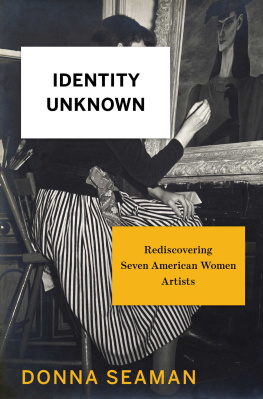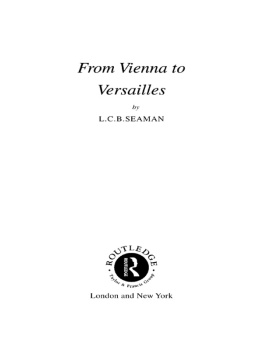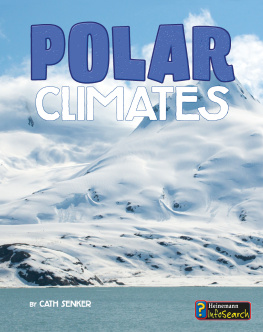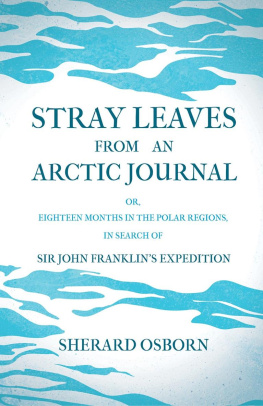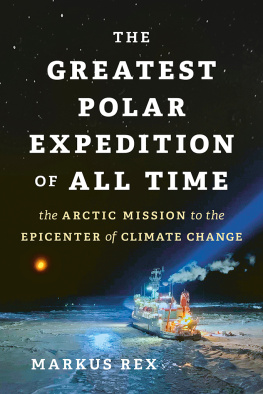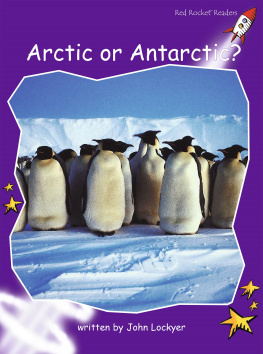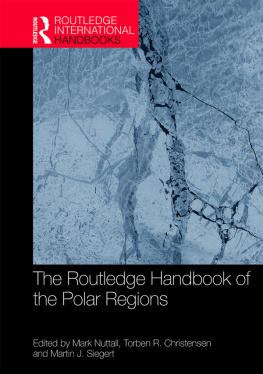

To Tala, who gave me a reason to want to save the world.
Published by
Princeton Architectural Press
37 East Seventh Street, New York, New York 10003
Visit our website at www.papress.com
All rights reserved
18 17 16 15 4 3 2 1 First edition
No part of this book may be used or reproduced in any manner without written permission from the publisher, except in the context of reviews.
Every reasonable attempt has been made to identify owners of copyright.
Errors or omissions will be corrected in subsequent editions.
Photographs and text 2015 Camille Seaman
Responding to the Sensing Element 2014 Elizabeth Sawin
Frontispiece: Terminus, Raudfjord, Svalbard, June 2010
Editors: Jennifer Lippert, Jay Sacher
Designer: Jan Haux
Design assistance: Paul Wagner, Mia Johnson
Special thanks to: Meredith Baber, Sara Bader, Nicola Bednarek Brower, Janet Behning, Megan Carey, Carina Cha, Andrea Chlad, Barbara Darko, Ally Dawes, Benjamin English, Russell Fernandez, Will Foster, Jan Cigliano Hartman, Diane Levinson, Emily Malinowski, Katharine Myers, Jaime Nelson, Rob Shaeffer, Marielle Suba, Kaymar Thomas, Joseph Weston, and Janet Wong of Princeton Architectural Press Kevin C. Lippert, publisher
Library of Congress Cataloging-in-Publication Data
Seaman, Camille, 1969
Melting away : images of the Arctic and Antarctic / Camille Seaman.
pages cm
isbn 978-1-61689-260-9 (hc)
isbn 978-1-61689-381-1 (epub, mobi)
1. Polar regionsPictorial works. 2. IcebergsPolar regionsPictorial works.
3. Natural historyPolar regionsPictorial works. 4. AnimalsPolar regionsPictorial works.
5. Climatic changesEnvironmental aspectsPolar regionsPictorial works.
6. Seaman, Camille, 1969- lTravelPolar regions. I. Title.
g 593. s 43 2015
910.911 dc 23
2014018830
Contents
Elizabeth Sawin
Responding to the Sensing Element
Elizabeth Sawin
I n 1977 the astronaut Rusty Schweickart wrote a few hundred words in which he tried to convey to the rest of us earth-bound souls something of his experience of seeing our Earth, that blue and white Christmas tree ornament, from space.
If I had the power, Id translate his words into every language spoken on our planet today, and make them mandatory reading for every last one of the seven billion of us, until we all began to picture ourselves situated on that small spot, that little blue and white thingon that little spot out there that you can cover with your thumb.
When I first saw Camille Seamans photographs, taken at both the far north and the far south of our little blue and white planet, I recognized in her a sort of kinship with Rusty Schweickart; a kinship best described in a phrase he coined. Camille, like Rusty, is a sensing element.
In his essay No Frames, No Boundaries, Rusty wrote And you think about what youre experiencing and why. Do you deserve this? Have you earned this in some way? Are you separated out to be touched by God, to have some special experience that others cannot have? And you know the answer to that is no. Theres nothing youve done that deserves this experience, that earned it. Its not a special thing just for you. And you know very well at that moment, for it comes through to you so powerfully, that you are the sensing element for all of humanity, you as an individual are experiencing this for everyone.
These sensing elements of ours go where most of us cannot go, will never go, and they bring back something for us, something thatif we let itchanges us. Suddenly we understand something we hadnt seen before.
Our home is beautiful. And small. And whole.
Its precious.
And its changing.
We are changing it.
Experiencing this for us, capturing it in words or on film is really all that the sensing elementsthe Rustys and the Camillescan do for the rest of us.
Theyve launched themselves into space in a tiny rocket ship or trekked across the ice in the deadly cold. Theyve drawn upon their physical strength, their discipline, and their decades of skill to bring back for the rest of us a glimpse of who we are and where we find ourselves.
And, despite the power of a dominant worldview that insists that we are all separate, competitive occupants of a world that is not alive, they have been open enough to have seen wholeness and brought that sense of wholeness home to us.
From there, Id say its up to us. Weve received the gift: the words, the images, the experience that was meant not for Rusty or Camilleand not just for us eitherbut for all of humanity. And we, as the members of humanity who happen to speak the language the words were written in or who can afford a beautiful book of photographs, or who were for whatever reason in the right place at the right time to be touched by this experience, might ask ourselves: so now what?
What is to be done with this knowledge, this experience?
What should we do once we know that our world is so beautiful and so whole?
What should we do once wesee that our speciesthis species that is clever enough to fly into outer space to see the wholeness from which it came, this species that is curious enough to go to the most extreme conditions to see the changes it has wroughtis in fact in desperate peril?
There are, of course, as many answers to these questions as there are people to ask them. A general sense of possibility however, might come from my field of systems analysis, which would remind us that, on its own, a sensor doesnt change a system. Dont misunderstand: sensors are critical. But systems also need actuators. They need elements that respond to the incoming information and create change.
A thermostat (a sensor) may say the room is cold, but without a furnace, the room will not warm.
A speedometer (another kind of sensor) may say the car is speeding out of control, but without a foot on the brake, the situation cant be salvaged.
Our sensing elementsour Rustys and Camillesare the thermostats and the speedometers. What we do with what theyve shown us, is up to us.
Camilleand her workare unable to tell you what to do. The right steps depend on who you are, where you are, and the network of relations you are embedded within. Systems theory cant tell you either, not with explicit detail. But it can point in a few general directions.
1) Pass it on. The sensing elements are few and the need for actuators is large, so pass on what you have been given the opportunity to see. Literally. Share this book. Buy a copy for your father-in-law and a second for your public library. Lobby until its on the list for your monthly book club. And, if you do such things, blog and tweet and post about it. Wire the world so that this particular sensor is connected to an ever-expanding array of people who will act.
2) Aim for the roots. What Camille witnessed at the poles is the end of a long chain of causation, tracing itself back to decisions to mine and burn fossil fuels, or even further back to the goals and choices of an industrial growth society. To change the future of the poles, and the future of our species, look for ways to influence those deep roots. Whether thats with your vote, solar panels on your roof, or a personal experiment with consuming less and enjoying more, take satisfaction in your understanding that, in an interconnected world, you dont have to travel to the poles to influence their fate.
3) Find your people. It can be hard to know that the world is whole, and imperiled, in a society that hasnt yet quite seen either of these truths. Dont let yourself be isolated and dont let yourself doubt what you have seen through Camilles eyes or through your own. When you share her work, and the work of others, when you take your steps to act at the roots, notice who responds, who steps forward to walk at your side. Ask for and give support. This journey of learning who we are and where we fit on the earth still has some distance ahead of it, and it is so much better, on a long journey, to walk with friends.
Next page

